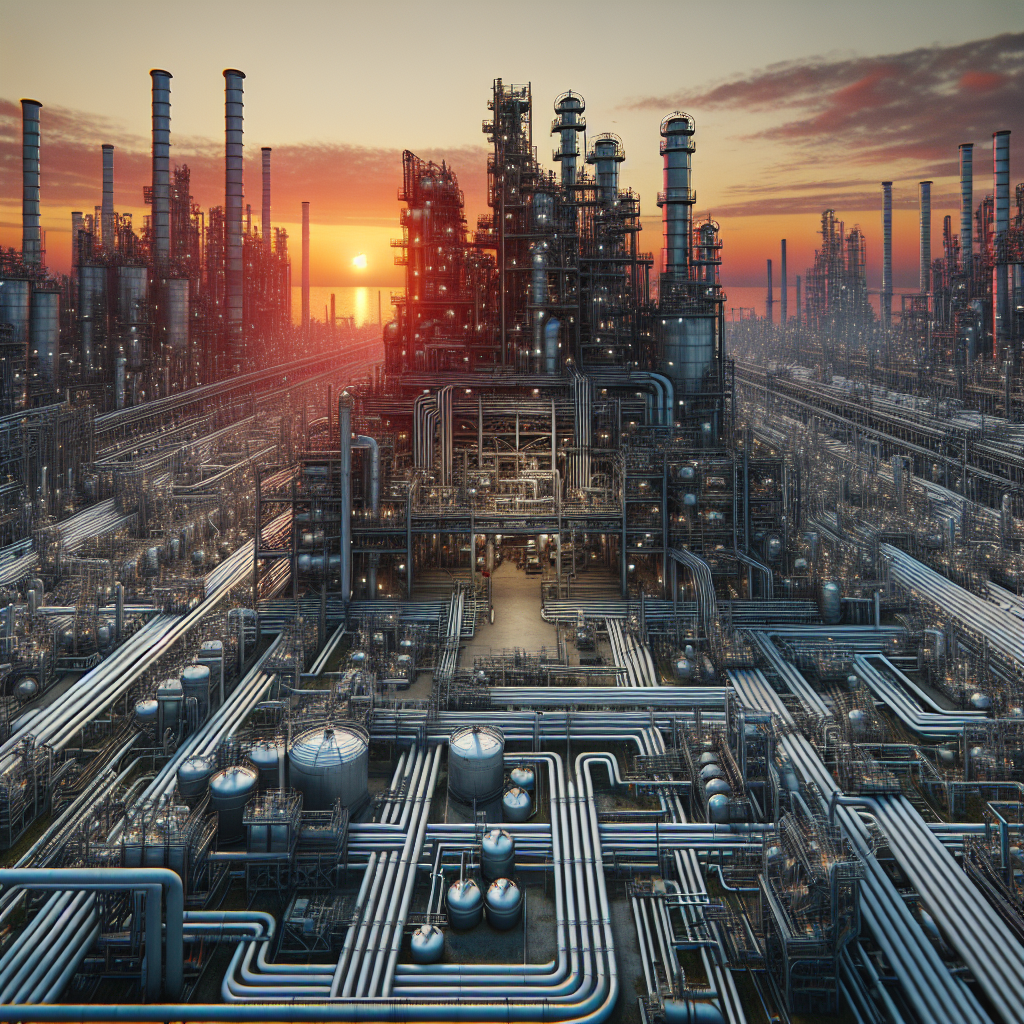Shanghai Huayi Group recently announced the permanent halt of production at its Wujing base, involving major facilities producing 950,000 tons of methanol and 700,000 tons of acetic acid, marking the end of an era for the old chemical industrial zone. Insiders in the industry indicate that the fate of the employees at the factory is still undetermined. This move reflects the inevitable elimination dictated by market forces and highlights the challenges and helplessness brought about by the downturn in the local economy and reduced demand.
The state-owned enterprise directly supervised by the Shanghai State-owned Assets Supervision and Administration Commission, the Huayi Group’s production base located in Wujing – Shanghai Huayi Energy Chemical Co., Ltd., has permanently ceased production, involving a production capacity of 950,000 tons of methanol, 700,000 tons of acetic acid, as well as supporting synthetic gas and hydrogen systems. According to Battery Industry Network, on September 13th, the Huayi Group issued a public notice stating that, in accordance with government requirements for industrial adjustments and carbon peak goals, its wholly-owned subsidiary, Shanghai Huayi Energy Chemical Co., Ltd., Wujing base, has implemented a permanent halt of production.
An anonymous internal source from Shanghai Jinshan Chemical, Mr. Wu, mentioned during an interview with Dajiyuan, “My nephew works there. With the poor economic environment in Shanghai now, many workers are waiting for the factory to pay them for their meals. The factory is borrowing money everywhere, so the closure is an inevitable outcome.”
According to the announcement, the reason for the company’s halt of production directly points to Shanghai’s industrial structure adjustments and the “dual carbon” strategic goals. From a financial perspective, the Wujing base incurred losses of approximately 120 million yuan in 2024, which may have been a major contributing factor for the decision.
Mr. Wu added: “My nephew mentioned that due to severe losses, the company’s facilities have not been updated due to lack of funds. The energy consumption is high, emissions are significant, and the utilization rate is less than half. Huayi Group is facing severe losses as well. I heard a month ago that many subsidiary companies were unable to pay their employees, and the State-owned Assets Supervision and Administration Commission stated they had no money, asking the companies to find a solution themselves.”
Public data shows that the utilization rate of the methanol facility at the Wujing base is only 46.5%, while the acetic acid facility utilization is 70.7%. Against the backdrop of overall industry oversupply in mainland China, the base had already lost its competitiveness.
At the local level, Shanghai has been emphasizing industrial upgrades and green transformation in recent years, positioning the Wujing area as a space for emerging industries. Reporters found out that with the relocation of the supply chain, Shanghai, as a major industrial hub in mainland China, is facing energy overcapacity, leading many companies to reduce production or even halt operations.
The news of Huayi Wujing base’s production halt immediately triggered reactions from downstream companies. In a phone interview, Zhang Kuangdi, a responsible person from a fine chemical company in Jiangsu, mentioned that some intermediate synthesis steps in his company require acetic acid as a raw material. He stated, “Although Huayi’s market share in the domestic acetic acid market is not the largest, its advantageous geographical location radiates to the Yangtze River Delta. Previously, procurement was convenient, but now we have to source from more distant places, increasing logistics costs.”
A business manager from Welink Chemical in Zhangjiagang, known as Welink Plastics in the industry, stated during an interview that the company primarily produces BDO, THF, NMP, and other chemical intermediates. The raw material chain and the methanol, acetic acid system have certain connections: “Although Huayi Wujing’s facilities are not our only supplier, the loss of a nearby supplier will affect our bargaining power.” He added that the company has already started looking for alternative channels, including overseas imports and other major coastal factories.
An academic from Fudan University’s Environmental Policy Research Center stated during an interview that Wujing, as an old chemical industrial zone, had made contributions to Shanghai’s industrialization over the past few decades. However, “You are aware of today’s international situation and China’s policy environment; apart from major e-commerce platforms like Alibaba, JD.com, and Pinduoduo, very few industries are profitable. And these profitable enterprises mostly belong to the service industry, mainly catering to consumer needs.”
This scholar believes that the closure of Huayi’s Wujing base is a microcosm of China’s chemical industry. The conflict between political policy orientation and market forces is the crux of the issue.
Recently, mainland China’s chemical industry has seen a wave of cases involving production halts, closures, and reorganizations. According to reports from platforms like Paint Procurement Network, from late 2024 to early 2025, more than fifty chemical plants have undergone shutdowns and maintenance for various reasons, some lasting over two months, involving production capacities exceeding 10 million tons. For instance, the propane dehydrogenation (PDH) unit under Tianjin Bohai Chemical entered a 65-day maintenance period starting from November 9, 2024.
Meanwhile, some enterprises have been forced to scale down due to financial constraints or operational difficulties. Beginning in July 2025, a petrochemical company in Inner Mongolia organized a leave for its employees, almost bringing production to a standstill. On June 17, 2025, U.S.-based Huntsman Corporation announced the closure of its hexamethylene diamine plant in Lianyungang, China.
Data from the “National Enterprise Bankruptcy and Reorganization Information Network” in mainland China shows that from late 2024 to early 2025, there have been over 4,000 records of bankruptcy and reorganization in the chemical industry, with many enterprises entering auction or compulsory liquidation procedures. For example, Shaanxi Shenmu Tai’an Fine Chemical Co., Ltd. had its overall assets being publicly auctioned, while Sichuan Yunda Chemical Group Co., Ltd. was identified as a bankruptcy reorganization target.

